Today’s Wheel of Adventures stopped at 2014, so here we go. This is part two of a four part series about an African safari. You can get caught up with Banoka Part One HERE.
Part one introduced Camp Banoka and described what a typical game drive day was like, and showed a variety of some of the larger wildlife. Part two will show what camp life is like along with photos of the camp rangers and staff, and take a look at some of the birdlife. Also more about how game drives are done will be explained.
While many African nations permit a wide variety of wildlife adventures, Botswana is carefully regulated, no game hunts, photographic shooting only. Unlike other locales which suffer traffic jams as radio equipped vehicles swarm by the dozens to every reported sighting, Botswana has limitations. When three vehicles are watching some wildlife and a fourth vehicle arrives, the first arrival must leave. This way the animals are minimally disturbed from what they would normally be doing. This avoids photos filled with more vehicles and people than animals. Also, Botswana wildlife is very intimate at close range, not the vast herds seen far off in the distance as the Serengeti.
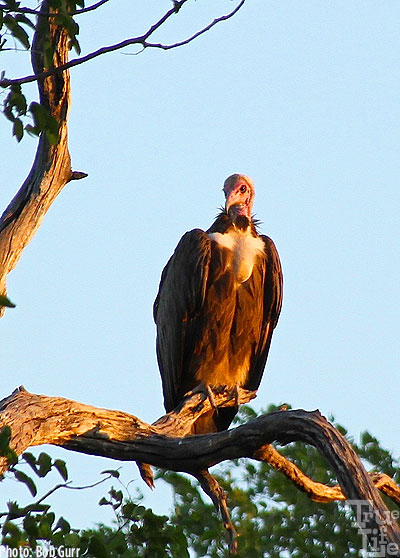

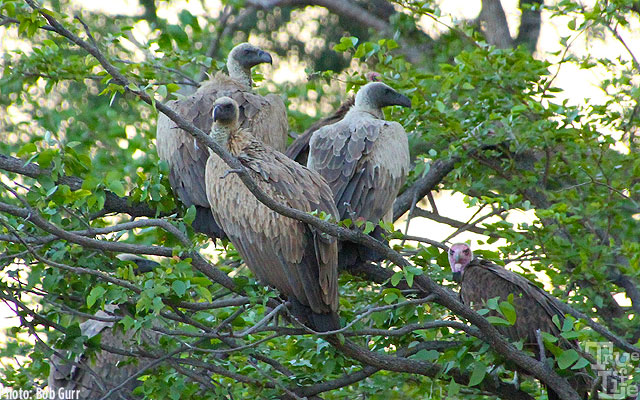
Wildlife has adapted in an interesting way to the vehicle presence; they find it easier to walk on the sandy trails than over brushy ground. The cool part then is that rangers can drive along watching animal tracks. It’s a fabulous way to see how many animals are in a group, their family size, how long ago, and where they might be headed. Another Botswana rule; if it’s an herbivore, you must stay on the trail. If a carnivore track heads off the trail, you can follow it off-road. The land Rovers simply mash down brush and small trees up to 12′ in height. No damage is done if the wheels straddle the tree – it just springs right back up after we pass. Vehicles do very little flora damage compared to elephants.


One time we sighted wild dog tracks and followed quickly, bounding over trees, logs, and rocks at a pretty fast clip hanging on for dear life! Sure enough, our ranger caught up with a pack of maybe 15 wild dogs on a hunt. They are very organized and are expert hunters. When they catch a large animal, they eat it while it’s still running, not bothering to kill it first like the big cats. Once the animal is stopped, parents allow their young to feed first, not at all like other animals where the biggest gets the best parts, lessor members get what’s left. Wild dogs are very social and spend much time in happy play together.
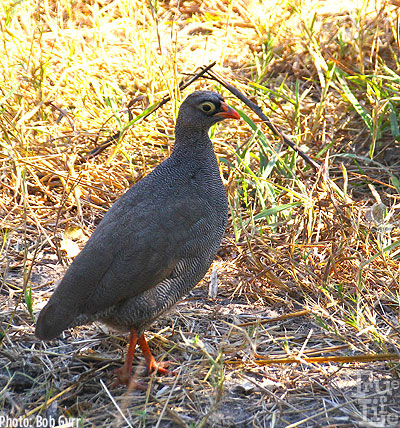
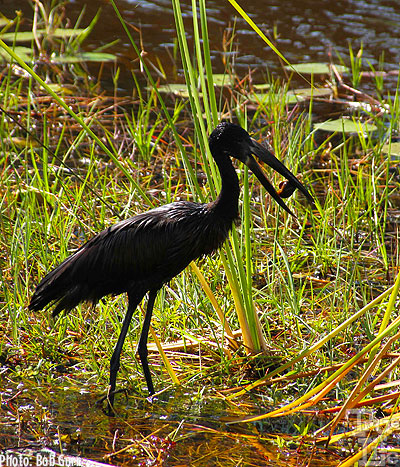
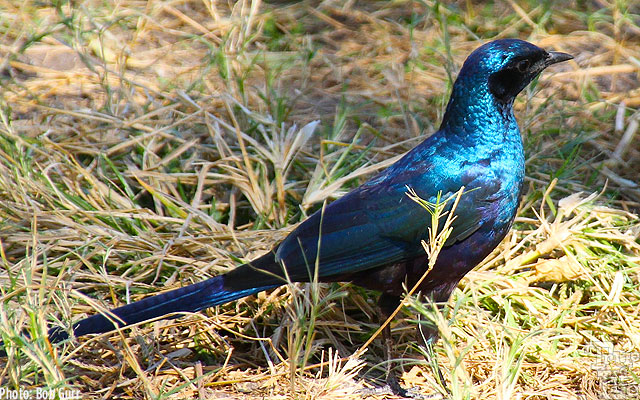
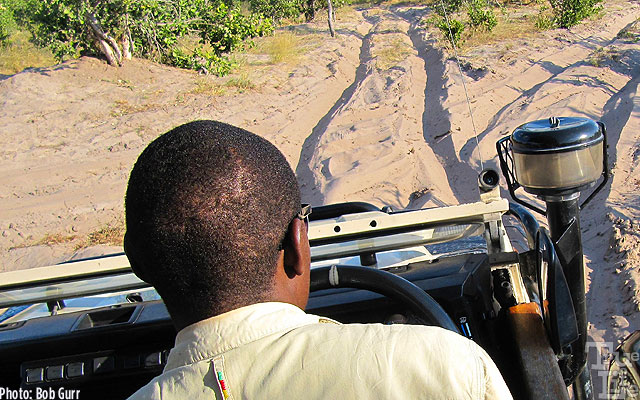
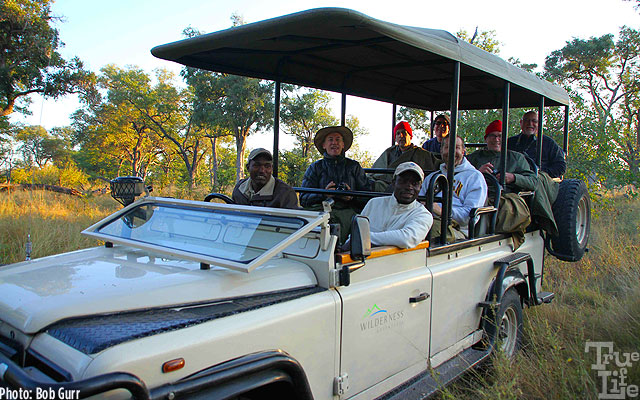
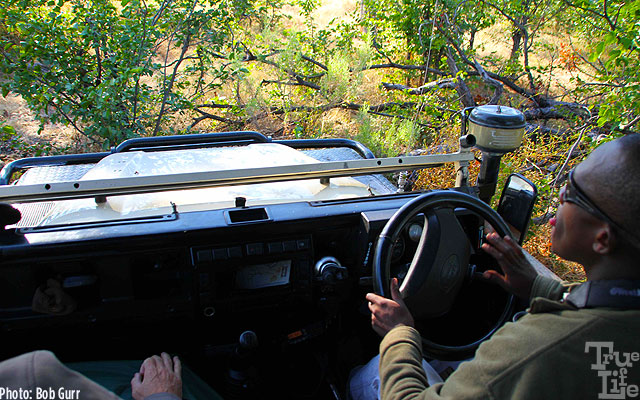
All safaris have a hard rule; do not exit the vehicle and no standing up to see better. Over generations, most animals have learned where vehicles and humans fit in their perception of what to them is prey or predator. It seems that they recognize the overall profile of humans seated in a vehicle, either moving or still, as neither prey nor predator. But, stand up and you become an individual human – dinner for a lion, a killer to an antelope. I learned this at a tea break stop. When our vehicle was moving near a large kudu, it just stared at us. As we parked just out it’s sight, I walked a short distance to take a peek. The kudu jumped and ran away at high speed. He saw a vertical moving image signaling danger. Naturally I was not about to test the lion prey theory!
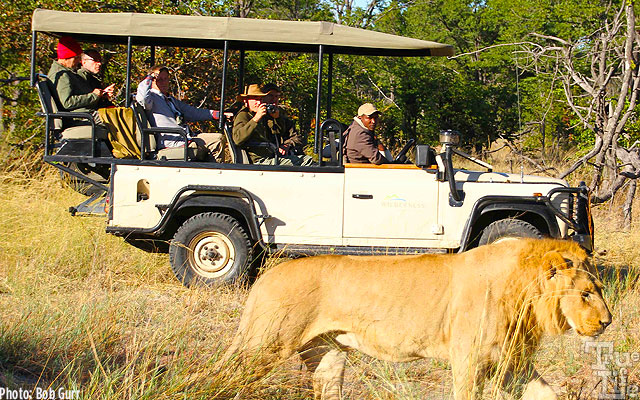
Trained rangers have an uncanny skill to know every footprint, every sound, and every smell in the forest. They keep up a continuous lecture on every aspect of flora and fauna, stopping from time to time to explain a detail or two. While some folks probably just enjoy the creatures, and many love to make photographs, we all get a thorough knowledge of the Okavango. Particularly how all life is related, how it’s truly a linked cycle of life that has evolved over millions of years in this unique region.
The design of the Wilderness Safaris camps are a combination of the latest ecological technology and a woodsy charm with both simplicity and luxury. The tents are actually suspended from an overhead roofed log structure with a raised wooden floor which should provide a long life. Bedding and baths are extremely comfortable, and well supplied with high quality implements and toiletries. Lighting is very bright small led fixtures. Hot water is always available from solar tubes and tanks. The whole camp operates on 220 volt supplied from battery storage AC inverters, all powered by a large array of solar panels. Each camp has a sewage treatment facility. All of these infrastructures are hidden from view, so the whole place seems just like going camping in a lush wildlife forest. Some nights feature an outdoor campfire cocktail and dinner party with lots of singing and dancing.
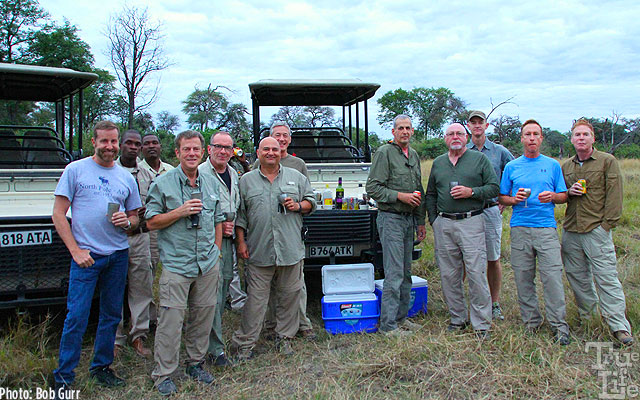
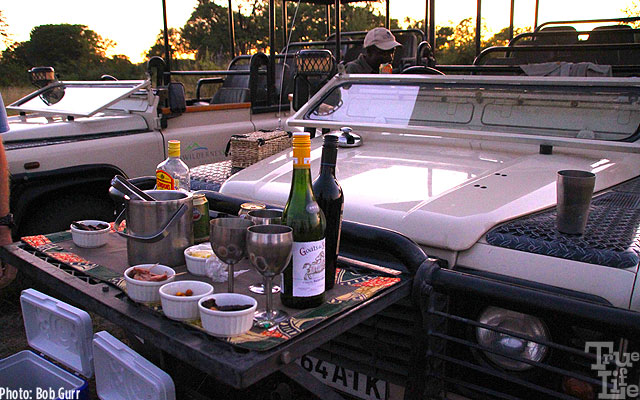
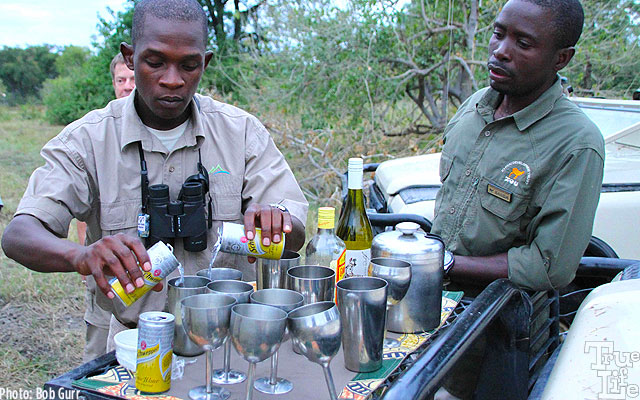
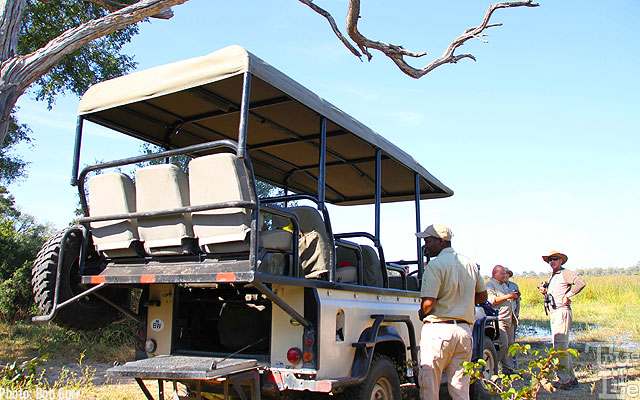
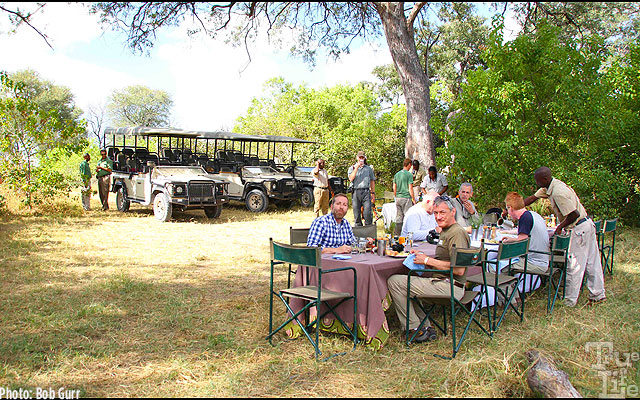
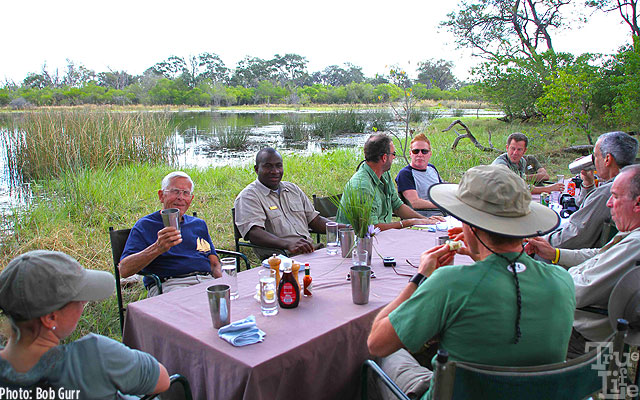

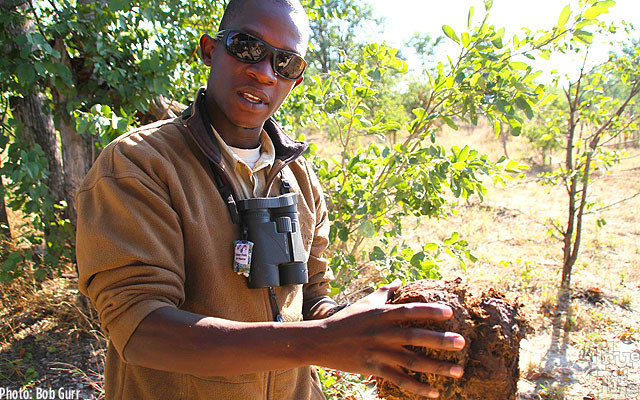
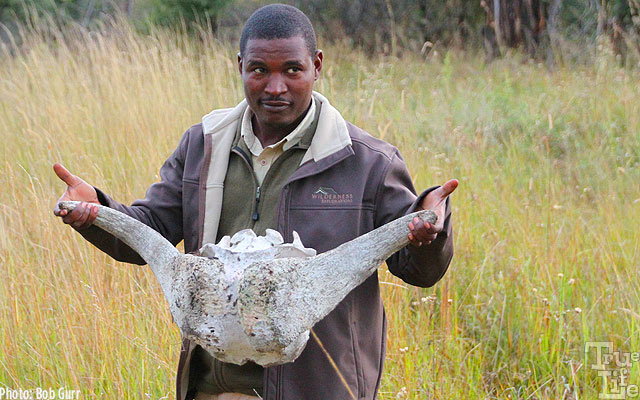
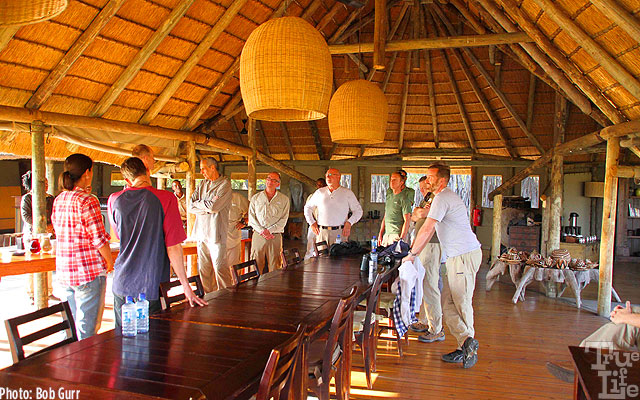
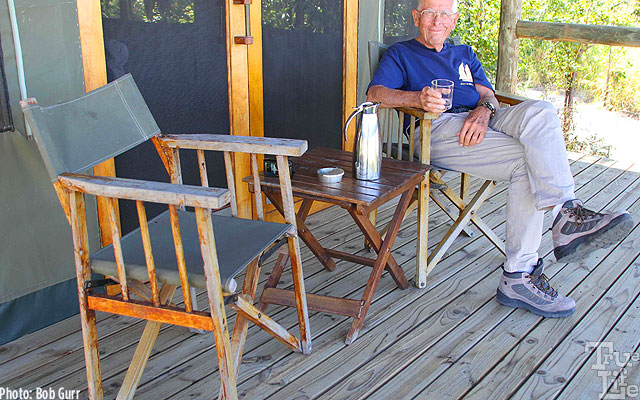

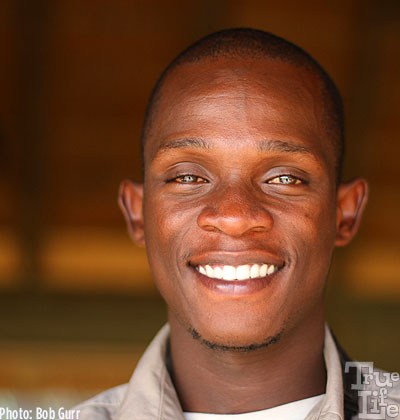


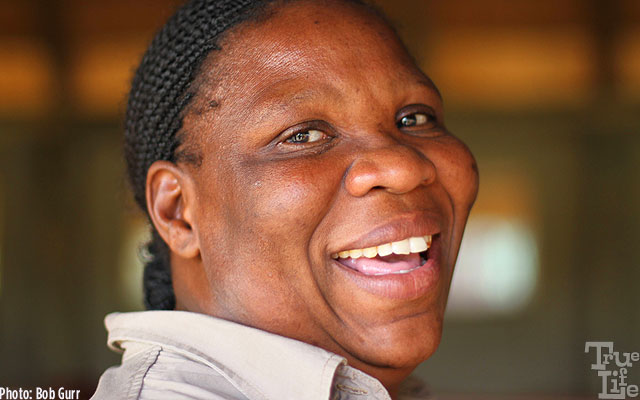

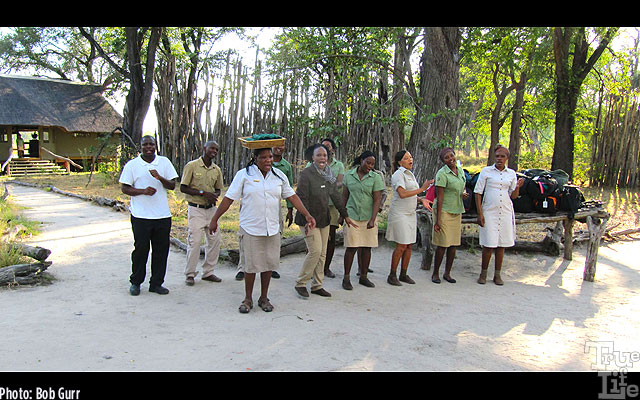

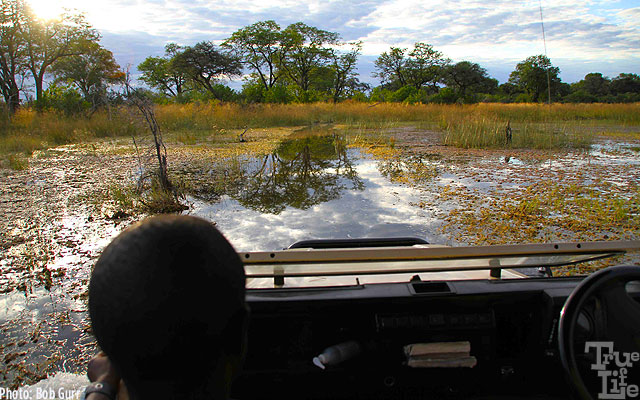
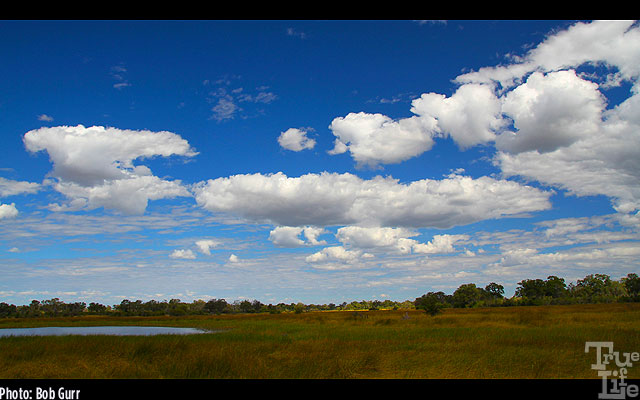


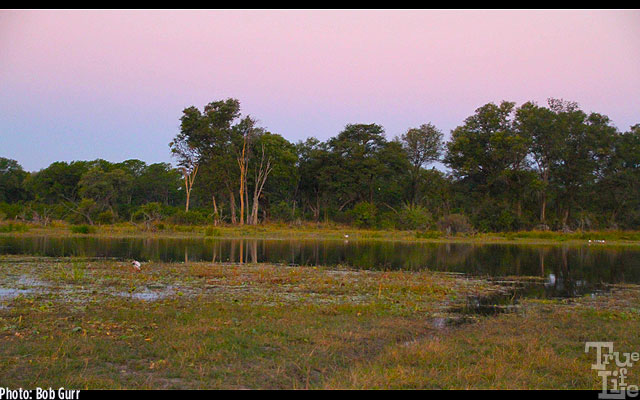

Next up: More stories and photos in part three. This time to Camp Xigera, a wetland park where all transportation is by boat and canoe to visit elephants, watch hippos, and beautiful birds. Lastly in part four we’ll stay at Duma Tau – leopards, giraffes, and lots of elephants.


You must be logged in to post a comment.